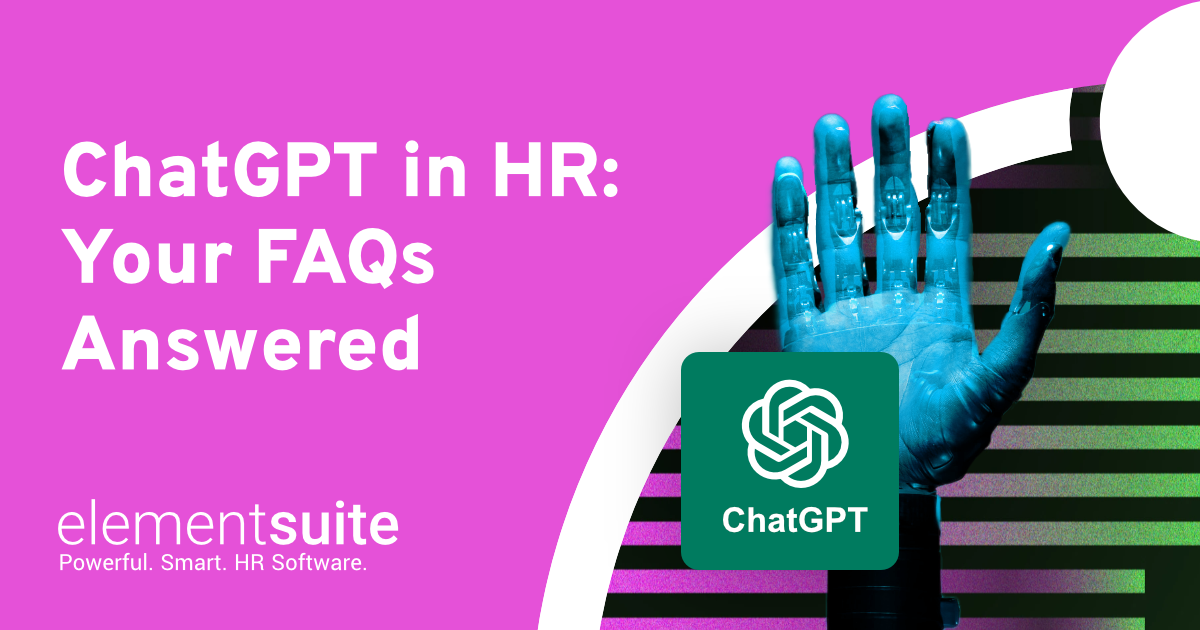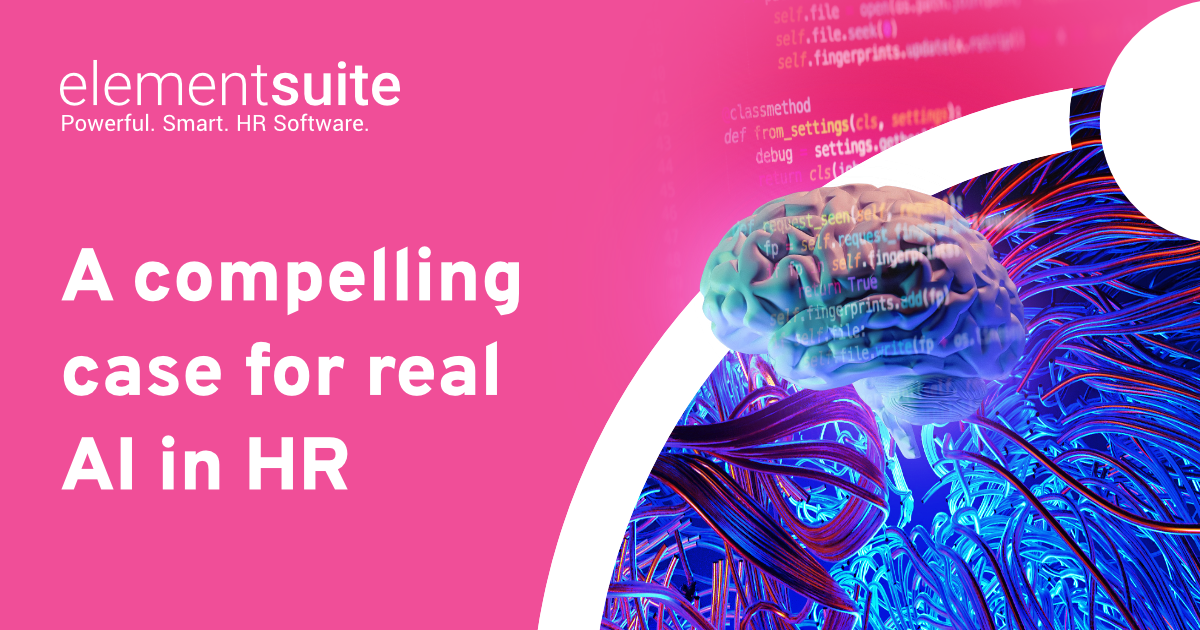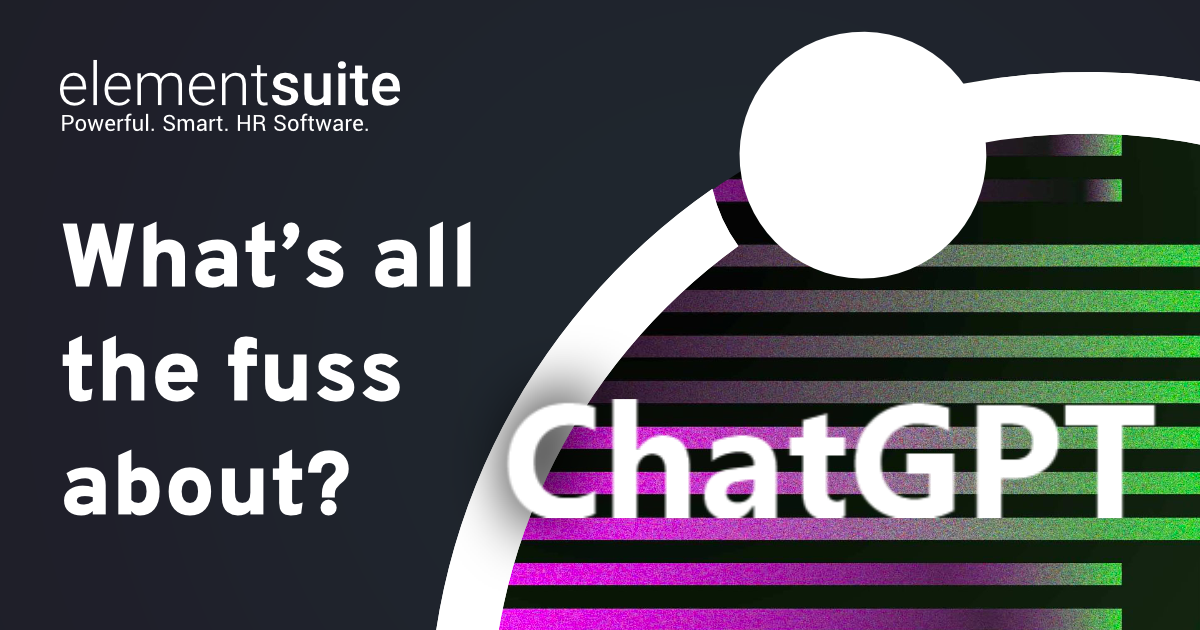HR Professionals have an opportunity to use ChatGPT to boost their HR operations. From automating routine tasks to personalising employee experiences, the applications are vast and promising. But what exactly is ChatGPT, and how can it empower HR professionals to rise above the challenges of today’s business environment?
We’ve compiled a list of the most pressing questions that HR professionals have about ChatGPT, so that you can uncover the remarkable potential of AI in revolutionising the capabilities across HR operations.
All about ChatGPT
What is ChatGPT?
ChatGPT stands for Chat-Generative Pre-trained Transformer. The chatbot uses a combination of natural language processing and machine learning to generate results based on data input quickly. It is designed to understand the context of conversations and can even recognise patterns in the text it comes across. It does this by analysing extensive collections of text data and analysing the words, phrases, and syntax that are most commonly used.
What’s more, ChatGPT can be trained to identify language patterns specific to a particular industry or field. This means HR professionals can get highly accurate results tailored to the needs of their organisation. Read more about ChatGPT here.
What is an LLM?
You will hear this concept being thrown around in numerous meetings as we continue navigating through the AI age. A large language model is an AI-powered algorithm trained to identify patterns in natural language.
ChatGPT is an example of a large language model. It is designed to rapidly generate text based on conversational data. This makes it an incredibly powerful tool for HR professionals, who can use the chatbot to quickly create job descriptions, policies and other written documents specific to their organisation’s needs.
How can I get started with ChatGPT?
Getting started with ChatGPT is easy! All you need to do is sign up for a free account on their website and follow the steps to set up your profile.
Once you have done that, you can start training your chatbot and customising prompts to generate results tailored to your requirements.
OpenAI offers two key versions of the ChatGPT application: a free version and a more advanced, paid version known as ChatGPT4.
What is the difference between ChatGPT 3.5 and ChatGPT 4?
| ChatGPT 3.5 | ChatGPT 4 | |
| Parameters | 175 billion | 1 trillion |
Free Version: The free version of ChatGPT is an excellent starting point for HR professionals. It provides access to the chatbot’s basic functionalities, allowing you to generate text and experiment with prompt engineering techniques quickly. This version is a great way to understand the potential of the technology and how it can be integrated into your HR processes.
ChatGPT4 (Paid Version): ChatGPT4 is a more advanced version that comes with several additional features. Besides the core capabilities of the free version, ChatGPT4 offers advanced customisation options, prioritised access to new features and improvements, and faster response times from the AI. This version is perfect for large organisations with complex HR needs, as it provides high accuracy and customisation.
Is there any information about ChatGPT’s ‘degeneration’ since going live?
Reports suggest minimal ‘degeneration’ in ChatGPT’s responses post-launch. This phenomenon hints at continuous user data utilisation for model training, reflecting OpenAI’s commitment to refining their models.
How accurate are the responses that ChatGPT provides?
Even though ChatGPT produces highly accurate results, it is important to always double-check the output for accuracy. It creates inaccurate information (also known as hallucinations) on rare occasions, so always thoroughly review the generated output before publishing it.
Handling data
What are some data challenges HR professionals may encounter when implementing ChatGPT?
Embracing ChatGPT involves navigating data complexities. Ensuring high-quality, diverse training data to prevent bias, safeguarding data privacy and security, and efficiently managing data volume for optimal model performance pose significant hurdles. HR professionals must skilfully address these challenges to harness ChatGPT’s potential while adhering to ethical and legal standards.
Where does the data you input reside once you have entered your information?
While ChatGPT uses input data for context, safeguarding sensitive information is paramount. Redaction of data ensures data security and integrity throughout interactions.
Our IT services express concerns about security and malware risks. Are these concerns valid, and how are organisations managing the associated risks?
Many IT departments are understandably cautious, but the primary security risk lies in unintentional inclusion of Personally Identifiable Information (PII) in cloud-based chat systems. As companies embrace this transformative technology, they adjust policies and strategies to remain competitive.
Harnessing the power of ChatGPT
What is prompt engineering?
Prompt engineering if the process of crafting effective instructions or queries to interact with AI models. It’s all about designing the best prompts to yield your specific desired outputs. This process optimises communication between users and AI, enhancing model performance for various tasks.
Can you only use the prompt engineering if you have version 3 or 4 of ChatGPT?
The intricacies of prompt engineering are accessible in ChatGPT versions 3, 3.5, and 4. These specialised fine-tuning techniques, enabled for certain LLMs, provide an avenue for maximising ChatGPT’s potential as a powerful assistant.
Can you use ChatGPT to create policies and procedures?
Yes, ChatGPT can assist in creating policies and procedures by generating drafts and providing suggestions. However, it’s essential to review and refine the content with human expertise to ensure accuracy, legality, and alignment with specific organisational needs and industry standards.
Can you upload a document to be translated?
Document translation through ChatGPT is feasible by uploading ‘raw’ text using extensions like ChatGPT File Uploader Extended. However, caution is advised when using extensions, ensuring their trustworthiness before installation. Alternatively, utilising OpenAI APIs for document upload offers a secure and effective alternative.
How can ChatGPT contribute to employee development?
The potential of ChatGPT in fostering employee growth is profound. Through personalised learning paths tailored to individual strengths and areas for improvement, ChatGPT empowers continuous development. On-demand training resources, prompt responses to queries, and real-world scenario simulations enhance skills, encouraging a more proficient and motivated workforce.




